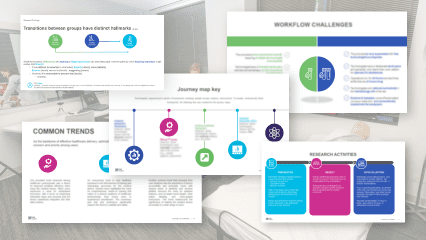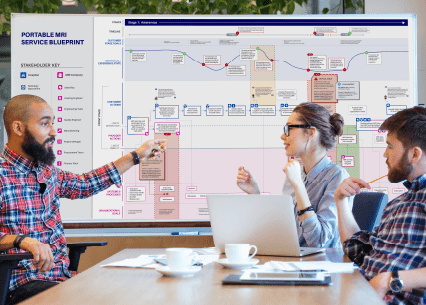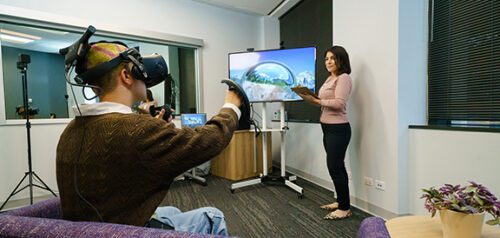
UX research

150+
UX research projects per year
20%
of our UX research is in customer journey, packaging, in-store
45%
of our UX research is on connected devices
10k
participants over 5 years
Our focus is user behavior
Successful product teams know there is much more value and ROI to be gained from incorporating user feedback early and often in the development process. Doing so helps shape early concepts for product and interface design, leading to the kind of best-in-class UX that wins market share.
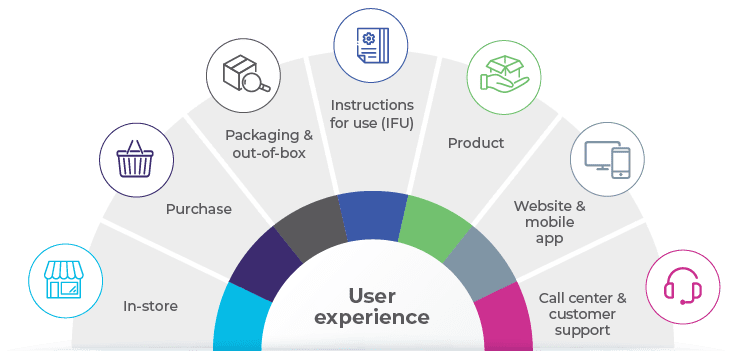
We improve UX across all product touchpoints
Our research helps improve your product design and product touchpoints! We’ve sat next to call center agents as they interact with software to improve efficiency, saving time and improving customer service. We’ve designed instructions to reduce product returns. We’ve provided insight to improve the packaging and out-of-box experience to delight and satisfy customers right from the start. We’ve gone in-store and online to evaluate point of purchase and increase sales. We’ve researched mobile apps in the field to better understand how they’re used in daily life and made design recommendations to exceed user expectations and increase brand loyalty.
We’re with you every step of the way to improve the user experience in just one channel or across all of them!
What does UX research measure?
Ultimately, our goal is to answer your questions. When we say every project is ‘custom,’ it doesn’t mean more expensive or time consuming. What it does mean is we listen to you, your business goals, your regulatory hurdles or output needs, your budget constraints, your timelines, and your expectations of our team. We are excited to help design a research program that will address all of those details. Our team has been applying UX research methods to uncover key user insights for over 30 years! We are as invested in your project’s success as you are and can’t wait to get started!
To uncover design insights, we can jump in at any point in the product development cycle. Are you looking to understand your customer’s journey early in the development process to identify gaps, pain points, or opportunities? Or perhaps looking at the user path or steps taken to complete a task using an existing product and how recent design changes have impacted the user? Or put the product into the hands of a variety of user populations to collect data about the look and feel and if it seamlessly fits into their lives. The data collected reveal user confusion, struggles, errors, or the mismatch between product system model and user mental models.
Our research helps us understand where the product is falling short and where it’s succeeding. This valuable data is transformed into design recommendations for your team to confidently bring a product to market that users will adopt and champion.
How do we measure?
If you’re unfamiliar with typical UX research methods, find examples below of what each method is, what it measures, when to use it, and outcomes.
Read more about our simulated research labs where we conduct in-lab and remote testing encompassing all stages of the product development lifecycle.
Understand the unmet needs of your customers to design the right product or service.
Get feedback early and often to course correct while it’s still easy to do so.
Assess current state to focus future development efforts or to document achievement of objectives.
Ethnography
Explore user behavior through naturalistic observation to better understand operational context of use and uncover workflows. Ethnographic research methods gather in-situ observations to develop a deeper understanding of user behaviors and processes as they interact with a product, system, or service.
When is it used?
Ethnographic methods are used in the early stages of product development.
Types of deliverables:
Detailed research findings with actionable recommendations of where to focus future development efforts.
Research questions answered:
- Rich, in-depth understanding of context of use, perceptions, motivations and thought processes driving user behaviors and workflows.
- Identification of inefficiencies in processes, tools, and designs to pinpoint areas of improvement.
- Understanding of unmet needs to inform the design of the right product or service.
- Identification of unexpected issues that may not be encountered in recall-based methods.
- Visibility into in-the-moment behaviors that can be forgotten or overlooked by users, such as habitual or obscured behaviors, in recall-based methods.
- Behavioral observation offering insights about the experience of the product, removing opinion and reporting bias.
Contextual inquiry
Take a deep dive into use scenarios to capture rich, in-the-moment data through direct observation of users’ behaviors in their natural environment. Contextual inquiry is an ethnographic method employing direct observation coupled with in-depth interviews to gain a holistic understanding of user practices and behaviors.
When is it used?
Contextual inquiry is conducted in the early stages of product development.
Research questions answered:
- Rich, in-depth understanding of users’ context of use and environment.
- Identification of regularly employed tasks, workflows and tools to help define requirements for a product as well as identify inefficiencies in those areas.
- Understanding of perceptions, motivations and thought processes driving user behaviors and workflows to identify what is important and critical to users.
- Visibility into in-the-moment behaviors that can be forgotten or overlooked by users, such as habitual or obscured behaviors, in recall-based methods.
- Identification of unexpected issues that may not be encountered in recall-based methods and unmet needs to inform the design of the right product or service.
Diary studies
An ethnographic method, diary studies are used to document the evolution of an experience over an extended period of time to identify opportunities for enhancement. Diary studies unveil the attitudes of users as they engage with products and services and log their activities as they occur.
When is it used?
Diary studies are typically conducted in the early stages of product development.
Research questions answered:
- Rich, in-depth understanding of users’ context of use and environment over a period of time.
- Identification of regularly employed tasks, workflows, and tools to help define requirements for a product as well as identify inefficiencies in those areas.
- Understanding of intricacies of tasks and workflows that are unveiled over time and with continued use.
- Understanding of perceptions, motivations and thought processes driving user behaviors and workflows to identify what is important and critical to users.
- Visibility into in-the-moment behaviors that can be forgotten or overlooked by users, such as habitual or obscured behaviors, in recall-based methods.
- Identification of unexpected issues that may not be encountered in recall-based methods and unmet needs to inform the design of the right product or service.
Concept assessments
Compare variations of system or device concepts to assess relative utility and impact to the end user experience. Concept assessments present one or more ideas that encompass the value proposition of a product or feature to determine if it aligns with the target audience’s needs.
When is it used?
Concept assessments are conducted in the early stages of product development.
Research questions answered:
- Assessment if users understand and want or need a product or feature to inform prioritization and provide confidence in development.
- Reduction of the risk of product failure in the market.
Focus groups
Leverage the combined experience of groups to capture attitudinal and aspirational data. Focus groups gather feedback from a group of 6-8 participants to understand perceptions of and what is desired from a product or service.
When is it used?
Focus groups are conducted in the early stages of product development.
Research questions answered:
- Understanding of desires, attitudes and unmet needs of a target audience to inform the design of the right product or service.
- Identification of perceptions of a product and what are believed to be the most valuable features.
- Unique insights gleaned from a panel of participants through group discussion.
Time & motion studies
Assess the effects of system design on use-related processes by quantifying the impact of process improvements. Time and motion metrics are collected to examine how tasks are done, track the time it takes to complete sub-tasks within a larger task and inform the balance of sub-tasks.
When is it used?
Time and motion studies are conducted in the early stages of product development.
Research questions answered:
- Definition of a process that allows time-efficient task completion while honoring the needs of users performing the tasks.
- Identification of inefficiencies and opportunities to create a more effective process.
- Development of predictions of how long tasks should take to perform and balancing of sub-tasks.
- Tracking of the time it takes to complete each sub-task in a larger task to help with predictions of how long the overall task should take to perform. In addition, it can be used to balance sub-tasks—if you have one sub-task that takes five minutes and another sub-task that takes ten minutes, you would need two people performing the ten-minute sub-task to keep up with one person working on the five-minute sub-task.
Personas
Humanizing data that represents subsets of your target population with personas to support user-centered design throughout the product development lifecycle. A persona defines a fictional yet realistic user archetype to build empathy, align the team on who they are designing for, and guide design decisions and strategy with confidence.
When is it used?
Persona development is conducted in the early stages of product development, ideally before the design process begins.
Research questions answered:
- Understanding of behaviors, motivations, goals, frustrations, needs, and other defining traits of a target segmentation of your audience to inform design of a product.
- Deep understanding of motivations driving user behaviors and the ‘why’ behind the defined elements of the persona.
- Identification of UX scenarios / key considerations of how your product can meet the needs and goals of the given persona to link findings to implementable recommendations.
Collaborative design workshops
Ensure that design insights are not lost in translation by engaging designers and key stakeholders in workshops based on the outcomes from formative testing. Design workshops foster ideation between individuals with various perspectives as well as ensure that these insights are appropriate, apply to existing infrastructure, and are properly prioritized.
When is it used?
Collaborative design workshops are conducted after a formative research study has been completed early in the product development lifecycle.
Research questions answered:
- Buy-in from designers and stakeholders into the research findings, implementation, and vision, as well as engagement in the creation of the final deliverable.
- Shared understanding of unmet needs and identification of potential solutions to inform the design of the right product or service.
- Diversification of perspectives, ideas, and discussions around design insights, challenges and solutions.
Formative usability testing
Progress product design rapidly with insights gleaned from small-scale iterative usability testing and prepare for future validation. Formative usability testing identifies what works well and what does not in an interface or product and why issues occur.
When is it used?
Formative usability testing is conducted iteratively throughout the early stages of product development on stimuli from sketches to prototypes, and the instructions for use (IFU) and packaging as part of the product system (IFU design, iterative testing of IFUs, packaging, differentiation studies, etc.).
Types of research questions/topics addressed:
- Discovery of usability issues and understanding of why they occur to inform design decisions.
- Early and continuous feedback to allow development teams to improve initial designs and create well-crafted experiences.
- Behavioral observation offering insights about the experience of the product, removing opinion and reporting bias.
- Reduction of the risk of product failure in the market.
Heuristic evaluations
Focus future research and create a foundation for comparative analyses with an assessment of the extent to which a design complies with or violates heuristics. Heuristic evaluations measure a design against predetermined, recognized usability principles.
When is it used?
Heuristic evaluations are conducted in the early to middle stages of product development.
Research questions answered:
- Identification of usability issues and indication of heuristic violations with actionable solution recommendations.
- Development of a usability baseline for comparative analyses.
Information architecture assessments
Provide a solid foundation on which to build an experience for digital or printed assets by assessing the information architecture. Information architecture assessments evaluate the organization, structure and labeling of a system with card sorting or similar activities.
When is it used?
Information architecture assessments are conducted in the early to middle stages of product development.
Research questions answered:
- An assessment of content organization, structure and labeling to gauge understanding, findability and intuitiveness and inform content strategy.
- Visibility in duplicative or unnecessary information to inform content prioritization.
- Understanding of user mental models related to the content.
Comparative testing
Assess multiple design directions and relative usability with comparative testing. Comparative testing contrasts two or more designs to gauge strengths and weaknesses.
When is it used?
Comparative testing is conducted 1) early in the product development lifecycle when considering multiple design directions or 2) at the end of the product development lifecycle on a completed design as a form of benchmarking.
Research questions answered:
- Assessment of advantages and disadvantages across alternative designs to evaluate performance of potential solutions and inform design direction.
- Evaluation of relative usability across multiple designs to track progress or gauge standing against competitors.
Benchmarking
Understand how the usability of your product compares to predicate or similar products by conducting benchmarking studies. Benchmarking measures a product’s user experience in comparison to a preceding version of the product, competitors, industry standards, or determined goals.
When is it used?
Benchmarking is performed at the end of the product development lifecycle on a fully developed design.
Research questions answered:
- Health assessment of the core product experience.
- Establishment of the product’s baseline usability by which to measure future iterations.
- Measurement of improvements and documentation of objectives and key results (OKR) to track changes over time.
- Insight into a product’s standing in the market to assess competitive advantages, disadvantages and opportunities.
- Prioritization of improvements to inform the product roadmap.
Summative usability testing
Document the achievement of pre-defined usability objectives to progress to the next lifecycle phase and establish a benchmark to which future product versions can be compared. Summative usability testing is a task-based evaluation of the overall experience, usability and performance of a completed design.
When is it used?
Summative usability testing occurs at the end of the product development lifecycle on a fully functioning product.
Research questions answered:
- Assessment of the overall experience, usability and performance of a product in comparison to benchmarks, such as competitors or previous iterations.
- Establishment of the product’s current usability by which to measure future iterations.
- Measurement of improvements and documentation of objectives and key results to track changes over time.
- Identification of usability issues in the interface.
- Validation of go/no-go decision prior to product launch.
- Behavioral observation offering insights about the experience of the product, removing opinion and reporting bias.
- Reduction of the risk of product failure in the market.
Longitudinal Studies
Understand how behaviors and use are shaped over time. Longitudinal studies can start at many different points, from the initial unboxing of a product to evaluating a design concept, and understand how users change, adapt or improve use over time. These studies can be iterative in nature and typically involve interviewing the same users over weeks or months.
When is it used?
Longitudinal studies are used throughout the entire product or design lifecycle.
Research questions answered:
- Rich, in-depth understanding of users’ context of use and environment over a period of time.
- Changes in user attitudes and/or understanding with experience and exposure
- A glimpse into understanding how a novice becomes an expert
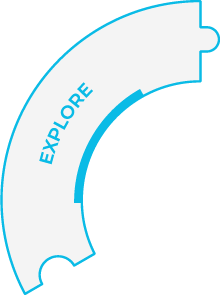
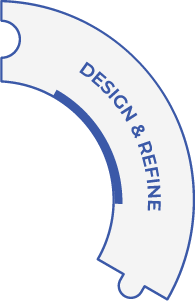
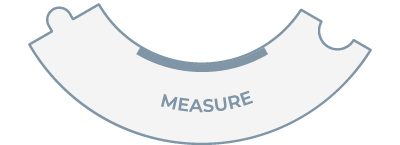
What is the output of UX research?
Our deliverables take on any format needed to address client objectives. We typically deliver research reports that include a summary of usability issues and performance measures, as well as actionable design recommendations detailing how to specifically improve the product or device based on observations and accepted heuristics and design principles. We also have experienced designers on our team who translate UX insights into low, medium, or high-fidelity designs. With these recommendations and designs, your designers or developers can make immediate changes.
Our research empowers your designers to design with confidence and deliver an experience users will love.
Related content
Read our latest news & insights
Case studies
3 considerations for accessible in-car UX research sessions
Adaptability, alternative setup options, and a prioritized task list are all helpful components to planning in-car research studies for populations with accessibility needs.
Integrating AI with care: FDA reveals focus areas for forthcoming guidance on AI products
As AI technology use expands within the healthcare industry, FDA focus areas will play an important role in ensuring safe implementation.
Case studies
